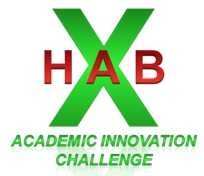Fri, Jun 01, 2012
Will Design Habitat Systems For Future Deep Space Missions
Five universities have been selected to participate in the 2013 Exploration Habitat (X-Hab) Academic Innovation Challenge led by NASA and the National Space Grant Foundation. These universities will design habitat systems, concepts and technologies that could be used in future deep space habitats.

The selection is the first milestone in a year-long process for these five teams. Throughout the 2012-2013 academic year, the teams will meet a series of milestones to design, manufacture, assemble and test their systems and concepts in cooperation with the NASA Advanced Exploration Systems (AES) Program's Habitation Systems Project team.
"The X-Hab Academic Innovation Challenge is an exciting opportunity to engage university teams in the design process for NASA's next generation space systems," said Jason Crusan, NASA's AES Program manager at NASA Headquarters in Washington. "The agency benefits from the fresh and innovative perspective of these university teams, and they learn about deep space human exploration and the systems engineering approach from an experienced NASA team."
The challenge is a university-level participatory exploration effort designed to encourage studies in spaceflight-related disciplines. The challenge encourages multidisciplinary approaches, further outreach efforts and partnering with experts and industry. This design challenge requires undergraduate students to explore NASA's work on development of deep space habitats while also helping the agency gather new ideas to complement its current research and development. NASA selected these five teams from among a group of proposals received in May 2012.
The X-Hab Academic Innovation Challenge 2013 teams are:
- California State Polytechnic University: Vertical Habitability Layout and Fabrication Studies
- Oklahoma State University: Deep Space Habitat, Horizontal Habitability Layout Studies
- Texas A&M University: Wireless Smart Plug for DC Power
- University of Alabama in Huntsville: Design and Development of a Microgravity Random Access Stowage and Rack System
- University of Colorado at Boulder: Remote Plant Food Production Capability
The National Space Grant Foundation will fund design costs, development and delivery of the systems to the AES Habitat Systems team during the summer of 2013.
More News
He Attempted To Restart The Engine Three Times. On The Third Restart Attempt, He Noticed That Flames Were Coming Out From The Right Wing Near The Fuel Cap Analysis: The pilot repor>[...]
Make Sure You NEVER Miss A New Story From Aero-News Network Do you ever feel like you never see posts from a certain person or page on Facebook or Instagram? Here’s how you c>[...]
From 2009 (YouTube Edition): Leading Air Show Performers Give Their Best Advice for Newcomers On December 6th through December 9th, the Paris Las Vegas Hotel hosted over 1,500 air >[...]
Aero Linx: NASA ASRS ASRS captures confidential reports, analyzes the resulting aviation safety data, and disseminates vital information to the aviation community. The ASRS is an i>[...]
“For our inaugural Pylon Racing Seminar in Roswell, we were thrilled to certify 60 pilots across our six closed-course pylon race classes. Not only did this year’s PRS >[...]
 NTSB Final Report: Rutan Long-EZ
NTSB Final Report: Rutan Long-EZ ANN FAQ: Turn On Post Notifications
ANN FAQ: Turn On Post Notifications Classic Aero-TV: ICAS Perspectives - Advice for New Air Show Performers
Classic Aero-TV: ICAS Perspectives - Advice for New Air Show Performers ANN's Daily Aero-Linx (06.28.25)
ANN's Daily Aero-Linx (06.28.25) Aero-News: Quote of the Day (06.28.25)
Aero-News: Quote of the Day (06.28.25)



